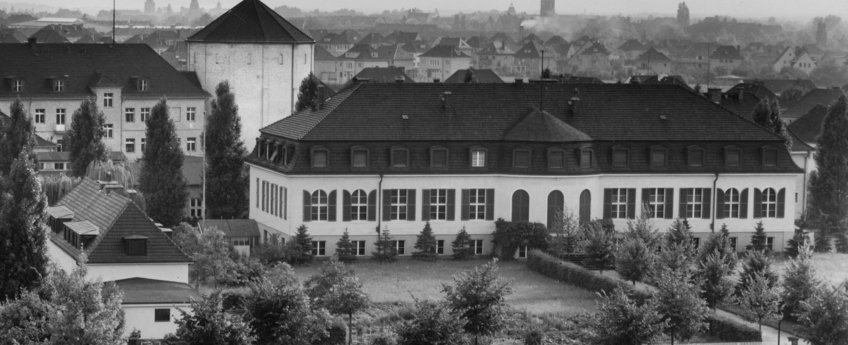
History of the House

The Otto-Warburg-Haus, which has housed the archives of the Max Planck Society since 1975, was previously the workplace of its namesake. The biochemist Otto Heinrich Warburg ordered the edification of the building and founded the Kaiser Wilhelm Institute for Cell Physiology in 1930. He submitted the designs himself and, in his spirit, ensured that the functionality of the building did not limit the aesthetics of the facility. In the institute, which operated until 1970, the Nobel Prize winner Warburg pursued basic research on plant and animal cells. One focus was on researching the metabolism of cancer cells.
In 1975, a few years after the death of the director and the closure of the Max-Planck-Institute for Cell Physiology, the archive of the Max Planck Society was founded to centrally secure the records of the institutes and make them accessible for use. The Otto-Warburg-Haus was adapted to meet the requirements of an archive.
You can find more detailed background information on the history of the house through the ages in the following publications and services:
Detailed history of the institute and information on the development of the archives:
- Publications from the Archives of the MPG: No. 16 Henning, Eckart, u. Marion Kazemi: Dahlem – Domain of Science (p. 23)
- Publications from the Archives of the MPG: No. 17 Henning, Eckart: Führer durch das Archiv zur Geschichte der Max-Planck-Gesellschaft
Apps with entries on the History of Science in Berlin-Dahlem (including Otto-Warburg-Haus):
- DahlemTour Berlin Audioguide (for iOS - Appstore); (für Androit bei Google Play)
- berlinHistory-App with background information on the history of the institute and architecture
(für iOS im Appstore); (für Androit bei Google Play)
If you’re interested in a guided tour, please read the information here.
fig. (on top): KWI for Cell Physiology on bird’s eye view, approx. 1940.

